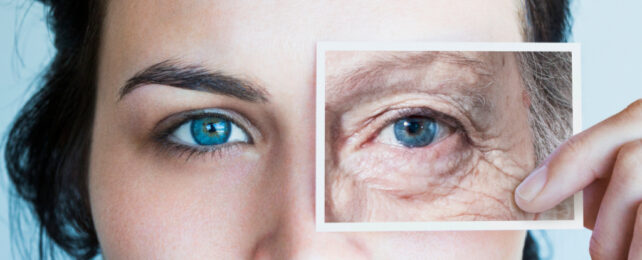A new study adds to a growing body of research that suggests our biological age – a measure that's distinct from a person's chronological age – could be reversible.
An international team of researchers found markers of biological aging that appeared to increase following stressful events such as major surgery, pregnancy, or a serious infection, and then returned to baseline levels after a period of recovery from those stressors.
Slowing down, let alone reversing, the effects of aging is something of a pipedream for medicine and health entrepreneurs.
Our growing understanding of the natural malleability of DNA, to which chemical tags are added or removed by cells, changing the way genes are expressed, is enticing research in this area.
These so-called epigenetic changes may reflect a person's exposure to lifestyle and environmental factors such as malnutrition, infection, or stress, in childhood or later life.
In this way, epigenetic changes mark the passing of time and can be used as a molecular 'clock' to estimate the biological age of tissues and organs compared to the person's chronological age.
Scientists can also estimate biological age by measuring the length of telomeres; the protective caps on the end of chromosomes that shorten each time cells divide.
Studies looking at telomeres have shown how the stress on new doctors or having multiple pregnancies can age cells beyond their years.
Past longevity research typically investigated ways to lengthen telomeres as a means of extending the lifespan of animals. Yet identifying ways to rewind epigenetic clocks has become a more recent focus.
"Despite the widespread acknowledgment that biological age is at least somewhat malleable, the extent to which biological age undergoes reversible changes throughout life and the events that trigger such changes remain unknown," explains Harvard Medical School molecular biologist Vadim Gladyshev, who co-authored the new study.
That's not to say scientists haven't chanced upon surprising results in the past that hint at biological age being reversible, even in humans.
Research shows that in spite of the toll an unborn baby takes on their mother's body, a mother's cells look 'younger' during pregnancy than her chronological age suggests they should be.
And in 2019, investigators conducting a small clinical trial realized that a cocktail of three common drugs may shed a few years off a person's biological age.
This new study, which used multiple epigenetic clocks to measure how biological age changes in response to stress in animal models and human datasets, also finds that stress-induced spurts of aging might only be a temporary thing.
"A clear pattern that emerged over the course of our studies is that exposure to stress increased biological age," write the researchers in their published paper.
"When the stress was relieved, biological age could be fully or partially restored. This is perhaps most clearly demonstrated by our analysis of biological age changes in response to major surgery."
Blood samples from elderly trauma patients undergoing emergency surgery showed surges in markers of biological age that returned to baseline a week after the operation.
This pattern reflected results from mice that had been surgically joined and then separated. However, patients opting for elective surgery showed no signs of accelerated aging.
Finding a signal among the noise of millions of cells abuzz with activity is difficult to do, hence why the researchers compared multiple epigenetic clocks. Interestingly, some detected no changes.
Even so, the researchers think their findings suggest that the body is capable of reversing biological aging processes.
But it's one thing to observe fluctuations in bodily processes, and another thing altogether to try and harness them therapeutically to reverse the effects of aging.
The body is capable of many remarkable things that modern medicine can barely replicate, and we don't yet know if these fleeting changes in cellular aging have any lasting or detectable health effects.
The research has been published in Cell Metabolism.
